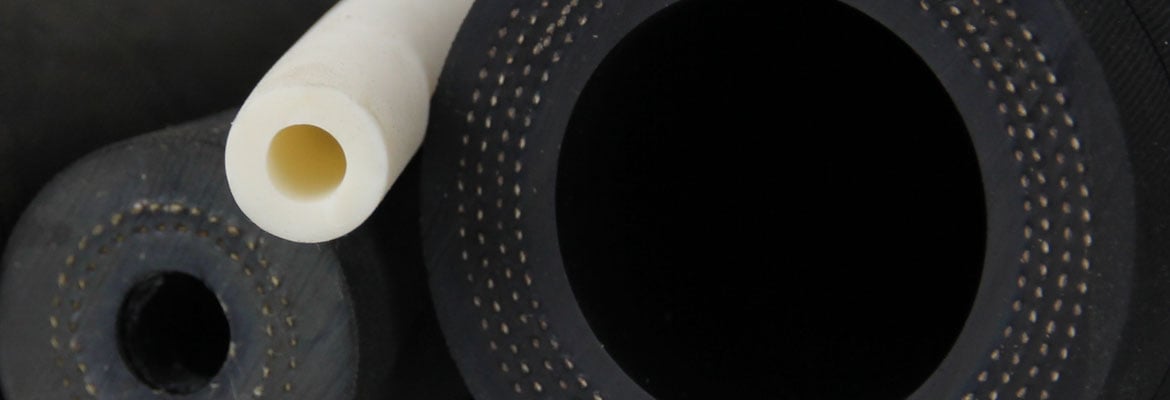Peristaltic hose pumps are most often known as hose or tube pumps. These pumps are self-priming rotary positive displacement pumps and consist of only three major parts: hose or tubing, housing, and rotor.
Types of Peristaltic Pumps: Hose Pump vs Tube Pump
In this blog, our team discusses the difference between a hose pump and a tube pump, and their suitable applications.

How do peristaltic pumps work?
Whether you have a hose pump or tube pump, the hose/tube is placed in the tubing bed between the rotor and the housing. The rotor has several “rollers” or “shoes” attached to the external circumference that move across the hose/tube where it is “squeezed” and subsequently pushes the liquid. The hose/tube behind the shoe or roller recovers its shape, which creates a vacuum and draws fluid in behind it.
Flow rate in these pumps is determined by multiplying speed (rpm) by the volume of the trapped liquid. The volume is moved at a consistent rate, even under a wide range of viscosities or density. The flow rate is directly proportional to the gearbox speed (rpm).
What makes a Hose Pump different?
Peristaltic hose pumps offer operators the following key benefits:
- high pressures - these can commonly operate at pressures up to 16 bars
- typically use “shoes”
- the casing is filled with lubricant to prevent abrasion of the exterior of the pump tube, and aid in the dissipation of heat.
- the force needed to occlude the hose is much greater than for the tubing
- bigger pumps and motors are required for a given flow rate with the hose pump.
There are a wide variety of hose pumps available, and the most popular choice is the reliable, durable Verderflex range. The Verderflex VF hose pumps and Verderflex Dura Series offer operators high flow rates and pressures to meet the demand of some of the harshest applications.
What makes a Tube Pump different?
Peristaltic tube pumps are like a “mini” version of their hose counterparts. They offer operators:
- lower pressures - can operate at pressures up to 4 bar
- typically have dry casing and use rollers with non-reinforced extruded tubing
- use rollers to squeeze the tube
- have a minimum of two rollers 180 degrees apart, and as many as eight to 12 rollers
- more rollers increase the frequency of the pumped fluid at the outlet, which decreases the amplitude of pulsing.
- more rollers also reduce the tubing life as there is a higher number of occlusions.
There are diverse tube pumps available, the choice of pump usually depends on the type of application and fluid being pumped. Global Pumps offer the entire range of Verderflex metering and dosing tube pumps. The Verderflex Vantage 5000 and Verderfelx Rapide Series are commonly used in applications handling highly corrosive, dangerous chemicals, food flavours or brewing additives.
Global Pumps YouTube channel: What Makes Hose Pumps DIFFERENT From Tube Pumps
Want to learn more?
Not sure which type of hose or tube pump suits your application? Get in touch with our Global Pumps’ team today to discuss your specific requirements.

